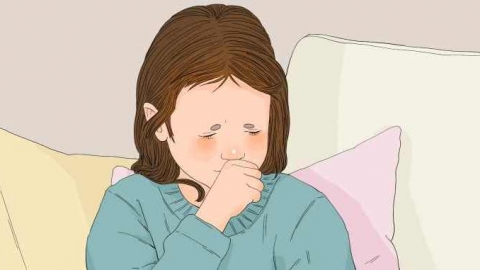Why do children's feet feel cold when they have a fever?
Generally, the main reasons for cold feet in children with fever include vasoconstriction during the rising phase of body temperature, underdeveloped peripheral circulation, acute upper respiratory tract infection, acute gastroenteritis, and early-stage infectious shock. If discomfort symptoms occur, it is recommended to seek timely diagnosis and treatment at a formal hospital. Detailed analysis is as follows:
1. Vasoconstriction During Temperature Rise
In the early stage of fever when body temperature is rising, the body constricts peripheral blood vessels, reducing blood supply to the limbs to ensure adequate blood flow to internal organs, resulting in cold feet. At this time, warm foot baths or gentle rubbing of the feet can promote circulation. Wearing warm socks and closely monitoring body temperature are also recommended. If the temperature subsequently exceeds 38.5°C, follow medical advice for treatment.

2. Underdeveloped Peripheral Circulation
Children's peripheral circulatory systems are not yet fully developed. During fever, the heart prioritizes blood supply to the brain and internal organs, further reducing blood flow to the limbs, causing cold feet. Regular outdoor activities can help strengthen heart and lung function. Encourage the child to drink warm water during fever, and improve circulation through foot massage or elevating the feet to relieve coldness in the feet.
3. Acute Upper Respiratory Tract Infection
Viral or bacterial infections can cause upper respiratory tract infections. During fever, metabolic disturbances and peripheral vasoconstriction lead to cold feet, often accompanied by coughing and nasal congestion. Under a doctor's guidance, medications such as children's paracetamol and chlorpheniramine granules, cefaclor dry suspension, and ribavirin granules may be used to fight infection and reduce fever. Warm water compresses on the feet can also improve local circulation.
4. Acute Gastroenteritis
Bacterial infection of the gastrointestinal tract causes inflammation, which can trigger fever and disrupt gastrointestinal function, impairing circulation and causing cold extremities, often accompanied by vomiting and diarrhea. Under a doctor's supervision, medications such as smectite powder, cefixime granules, and oral rehydration salts III may be used to protect the gastrointestinal mucosa, fight infection, and replenish fluids. Cold feet usually improve as symptoms subside.
5. Early-Stage Infectious Shock
Severe infections can lead to infectious shock. In its early stage, the body constricts peripheral blood vessels, causing cold feet, often accompanied by low blood pressure and lethargy. Immediate medical attention is required. Under a doctor's direction, medications such as ceftriaxone sodium for injection, penicillin sodium for injection, and dopamine injection may be administered to fight infection, raise blood pressure, and, if organ failure occurs, continuous renal replacement therapy may be necessary.
In daily life, adjust children's clothing according to the weather to avoid cold exposure; ensure food hygiene to prevent gastrointestinal infections; closely monitor children's mental status and limb temperature during fever, and promptly implement warming or cooling measures; schedule regular health checkups to enhance health awareness.







